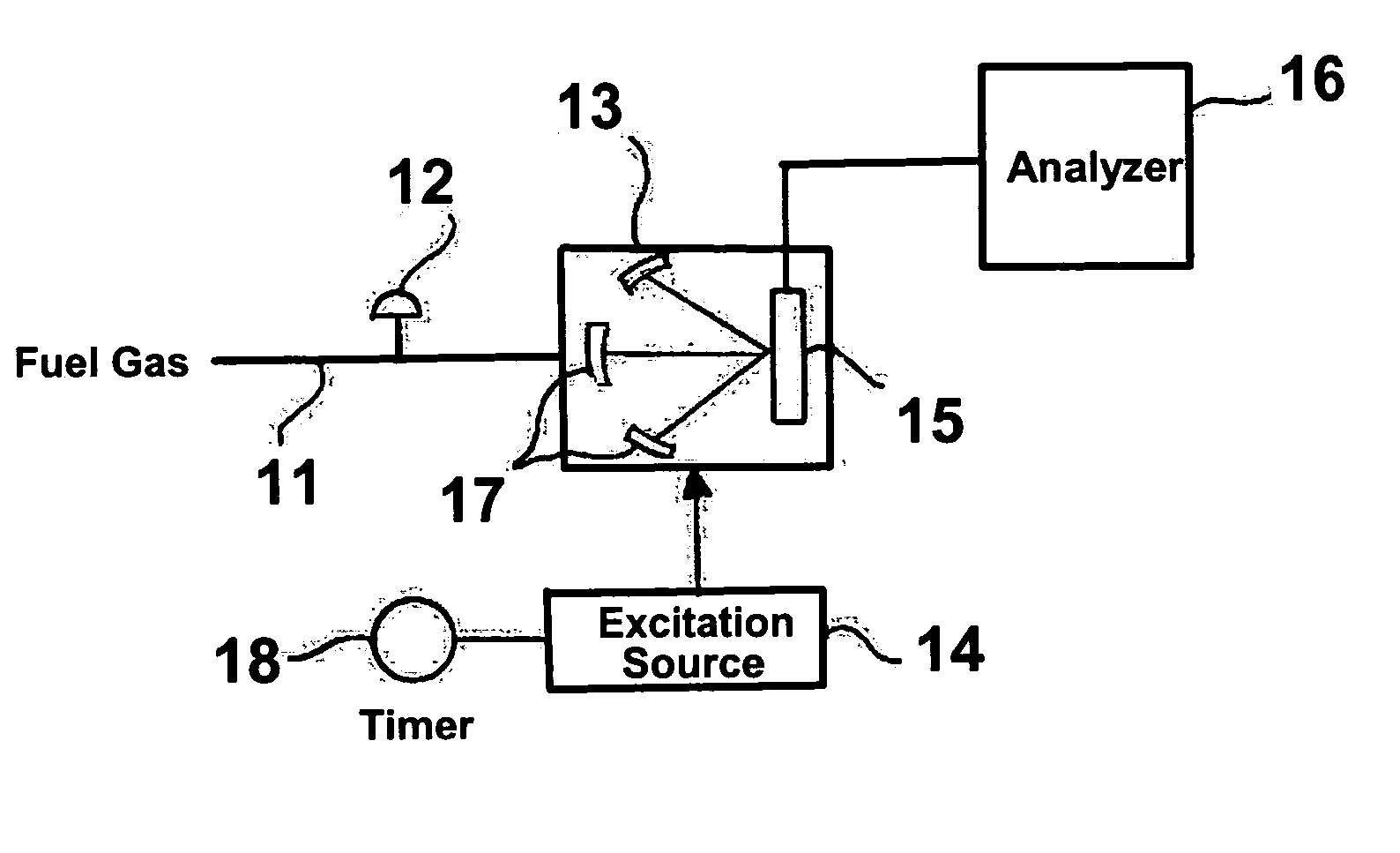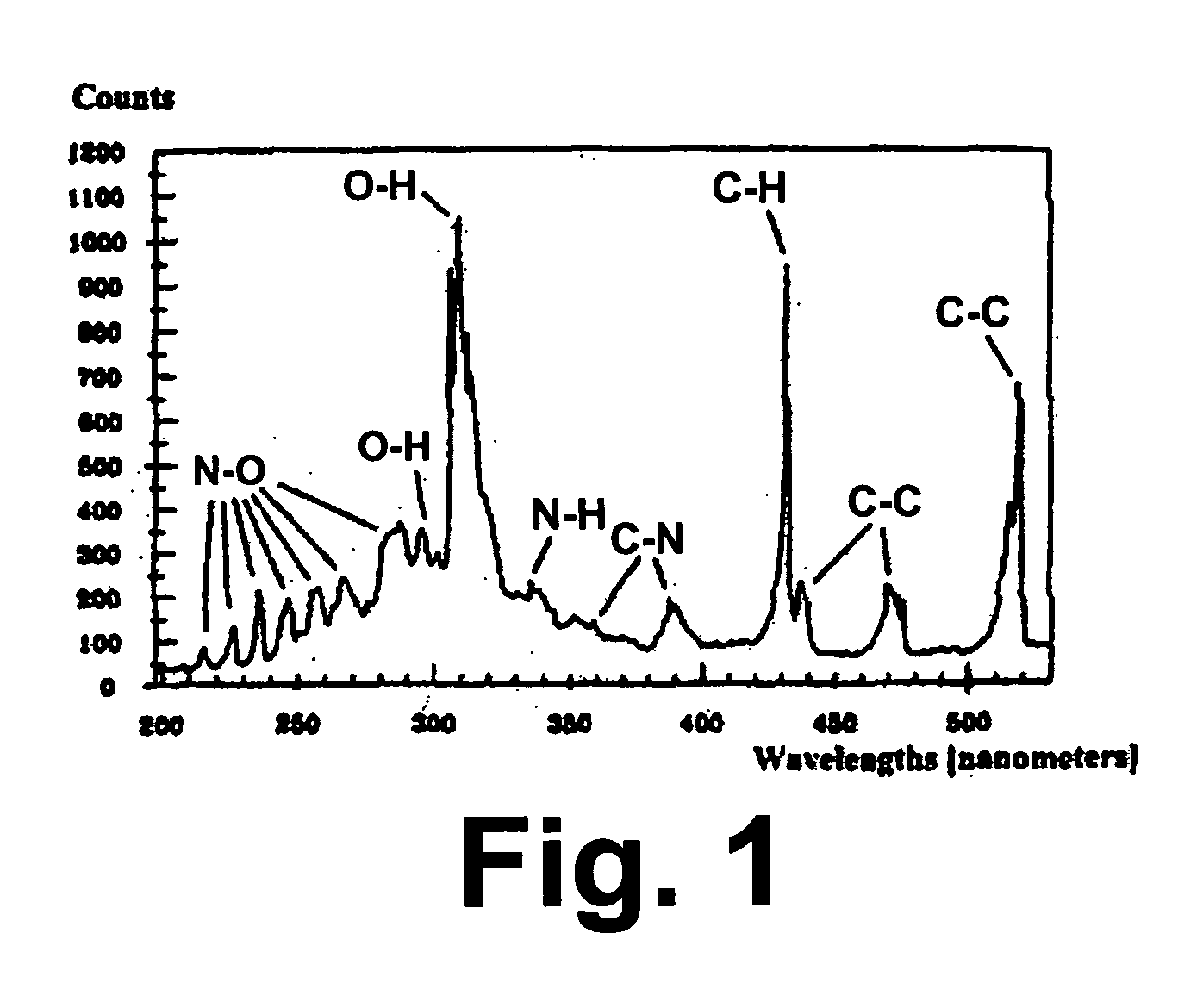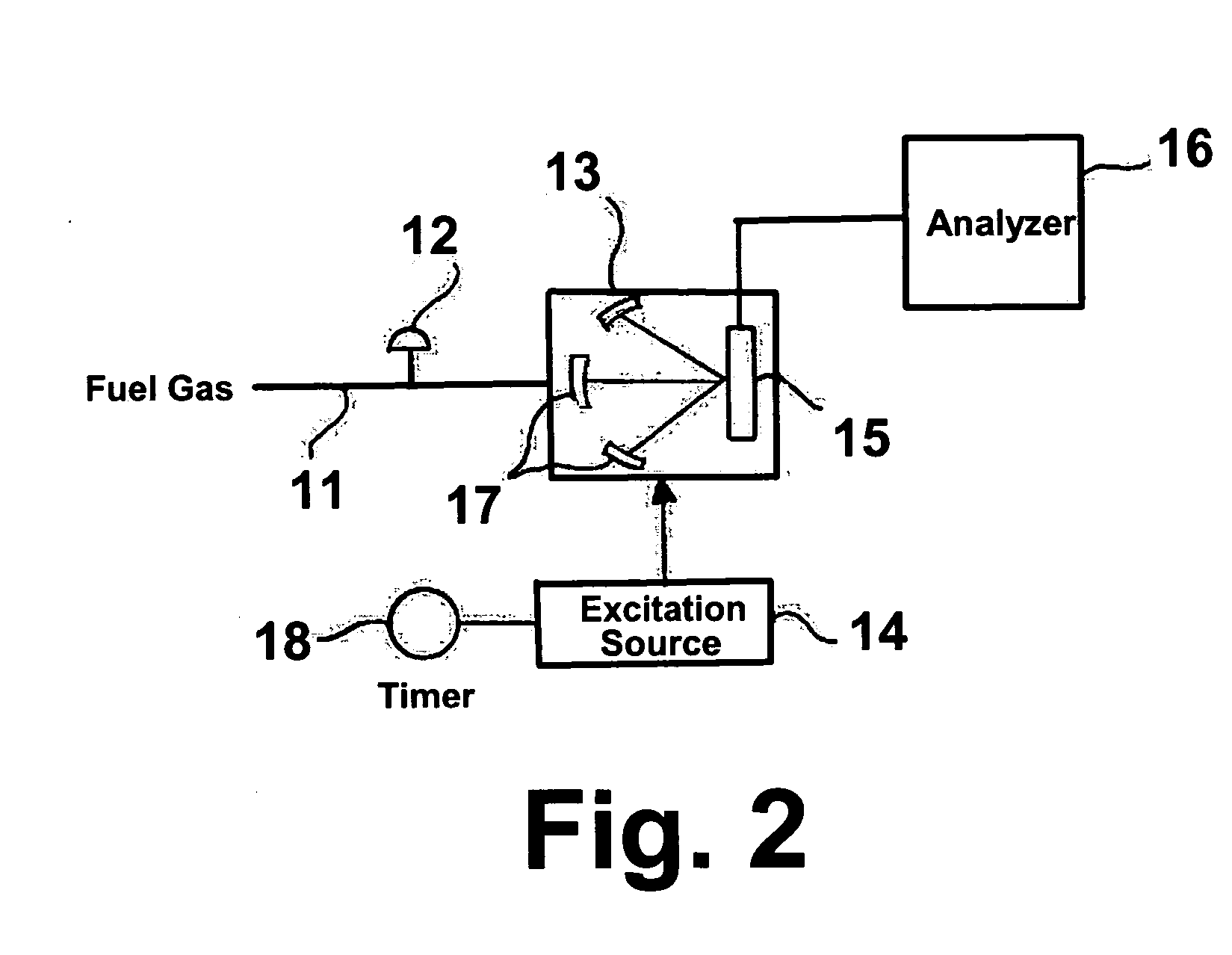Method and apparatus for measuring the heating value of a single or multi-component fuel gas
- Summary
- Abstract
- Description
- Claims
- Application Information
AI Technical Summary
Benefits of technology
Problems solved by technology
Method used
Image
Examples
Embodiment Construction
[0022] The invention claimed herein is a method and apparatus for measuring the heating value or energy content of the fuel gas or gas mixture. In this method, a stream of fuel gas or gas mixture is regulated to a desired pressure. This fuel gas or gas mixture is introduced into a specialized designed chamber in either a continuous or batch-wise manner. An excitation device operating either continuously or periodically is used to excite the molecules of the fuel gas or gas mixture. Several different excitation sources can be used including, but not limited to, an electric arc, a spark, a plasma, a laser, a flash lamp, and a pilot flame. In accordance with one preferred embodiment of this invention, the fuel gas pressure is decreased to a value below 1 atmosphere so as to enhance the excitation effect. In accordance with another preferred embodiment of this invention, the chamber comprises at least one focusing component so as to enable the detector to be exposed to the largest possi...
PUM
 Login to View More
Login to View More Abstract
Description
Claims
Application Information
 Login to View More
Login to View More - R&D
- Intellectual Property
- Life Sciences
- Materials
- Tech Scout
- Unparalleled Data Quality
- Higher Quality Content
- 60% Fewer Hallucinations
Browse by: Latest US Patents, China's latest patents, Technical Efficacy Thesaurus, Application Domain, Technology Topic, Popular Technical Reports.
© 2025 PatSnap. All rights reserved.Legal|Privacy policy|Modern Slavery Act Transparency Statement|Sitemap|About US| Contact US: help@patsnap.com



